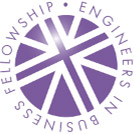Grand Challenge – 2023
Back to Competitions | The Grand Challenge is a three-week project where students work in cross-disciplinary and cross-year teams to conceptualise, design and produce a product (in line with CDIO). They produce a business case, and a promotional video and demonstrate their prototype at a Trade Show event to peers, staff and industry contacts. Each group is assigned a member of staff as a non-executive director, and there are industry talks, masterclasses on business and media, and a technical helpdesk available to support them. The overall theme of this year’s Grand Challenge was Engineering Heritage with five sub-themes – these were Discovering Historical Artefacts, Analysis and Interpretation of Historical Finds, Heritage Preservation, Interactive Technologies to Enhance Heritage Sites, and Condition Monitoring. Prizes were awarded for each sub-theme. The £3,000 Engineers in Business prize pot was divided equally between the winning students. The students were challenged to identify a current or future heritage need in the sub-theme assigned to their team They had to define the problem by exploring the context, develop a solution to the problem, and then develop and evaluate a detailed concept of their solution. build a working demonstrator and present it at the trade show with a supporting business model canvas and a promotional video. Ideas had to be sustainable and inclusive, ambitious, and future-thinking. |

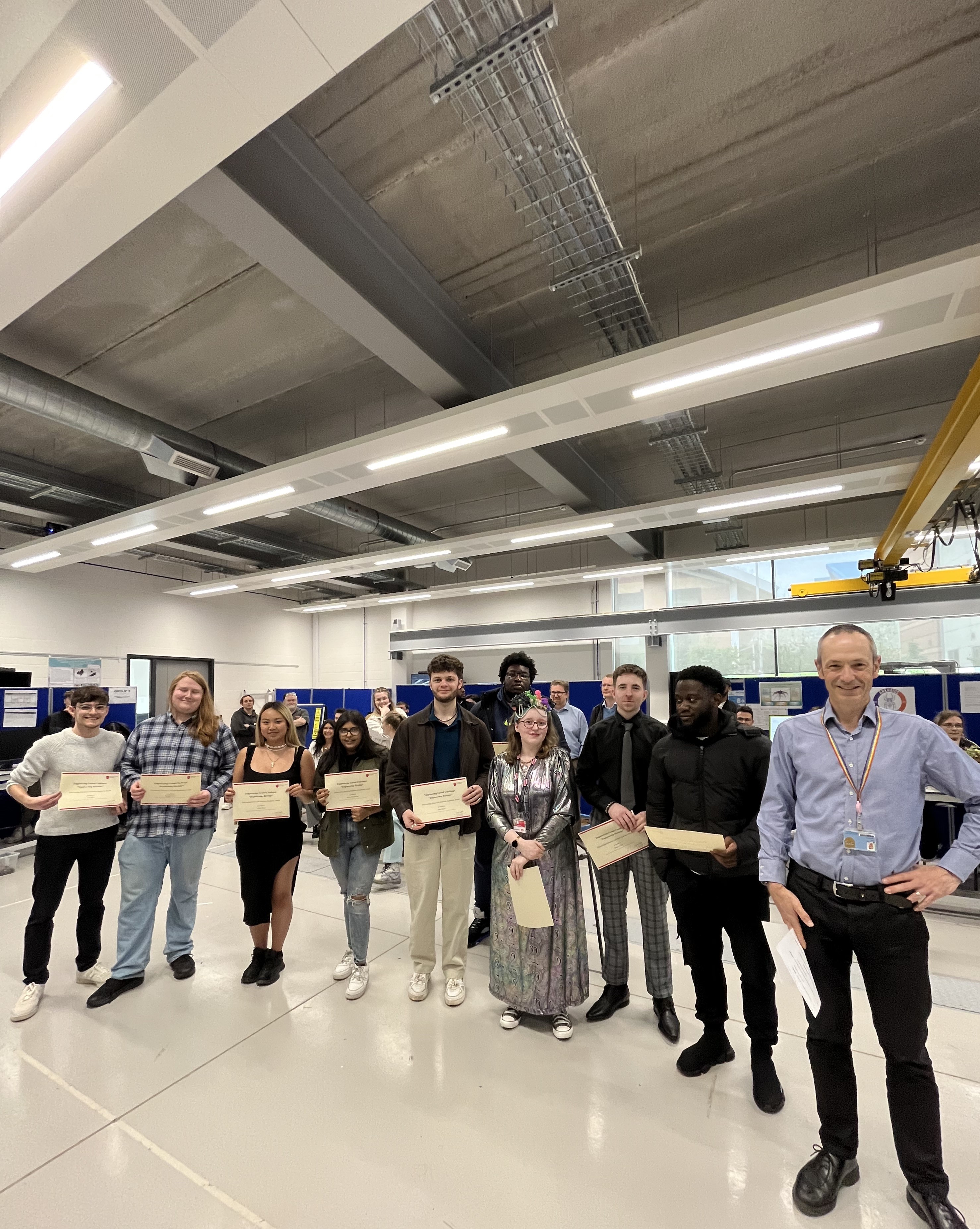
Discovering Historical Artefacts Winner: Lorelai Team
The Lorelai Team comprises first and second-year engineering students (pictured left to right) Dom Bower, Ruaidhri Taylor, Chloe Wang, Priya Chandara, Nicholas Nuamah-Darkwah, Joe Burch, Amy Lukomiak, Ethan Crump, Samuel Adebayo and Prof Neil Mansfield.
The Lorelai Team designed a robotic aided arm with a soft grabbing method as well as a strong cupping approach. This grabber provides a safer gripping technique reducing the risk of any damage and facilitates moving large objects from inaccessible locations.
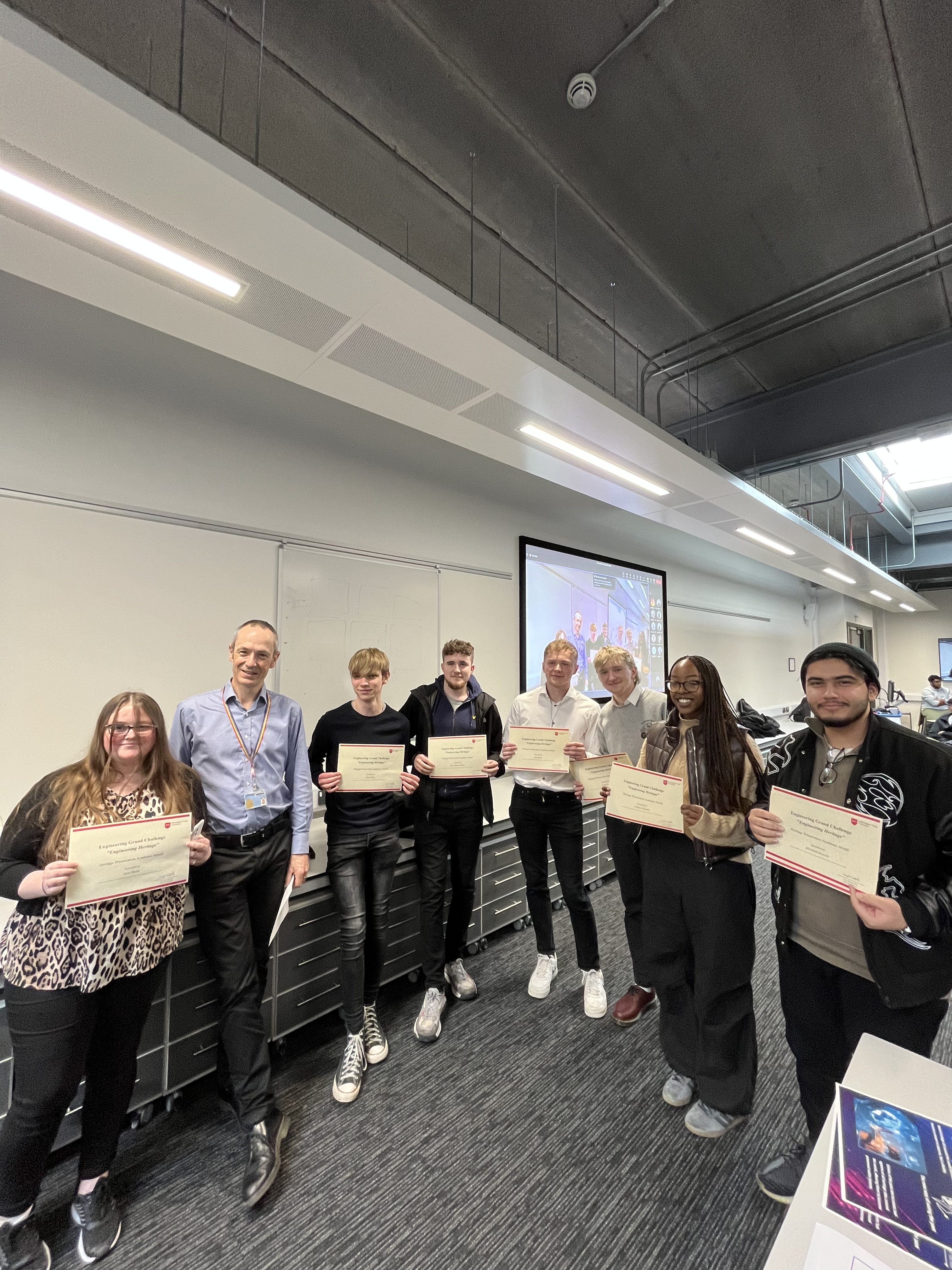
Analysis And Interpretation of Historical Finds Winner: Echoes of the Past Team
The Echoes of the Past Team comprises first and second-year engineering students Sean Walsh, Ollie Wilkinson-Burne, Elizabeth Knowles, Chelsea Kateera, Joshua Dale, Omar Al-Maimani and Josh Wood.* They are pictured with Professor Neil Mansfield.
The Echoes of the Past Team’s concept uses LiDAR scanning units to scan Heritage sites or Artifacts. These places or objects can then be replicated via a Hologram, removing human damage and ensuring a permanent version of the site or Artifact is available for future generations to access.
* Lineup may not match students’ names
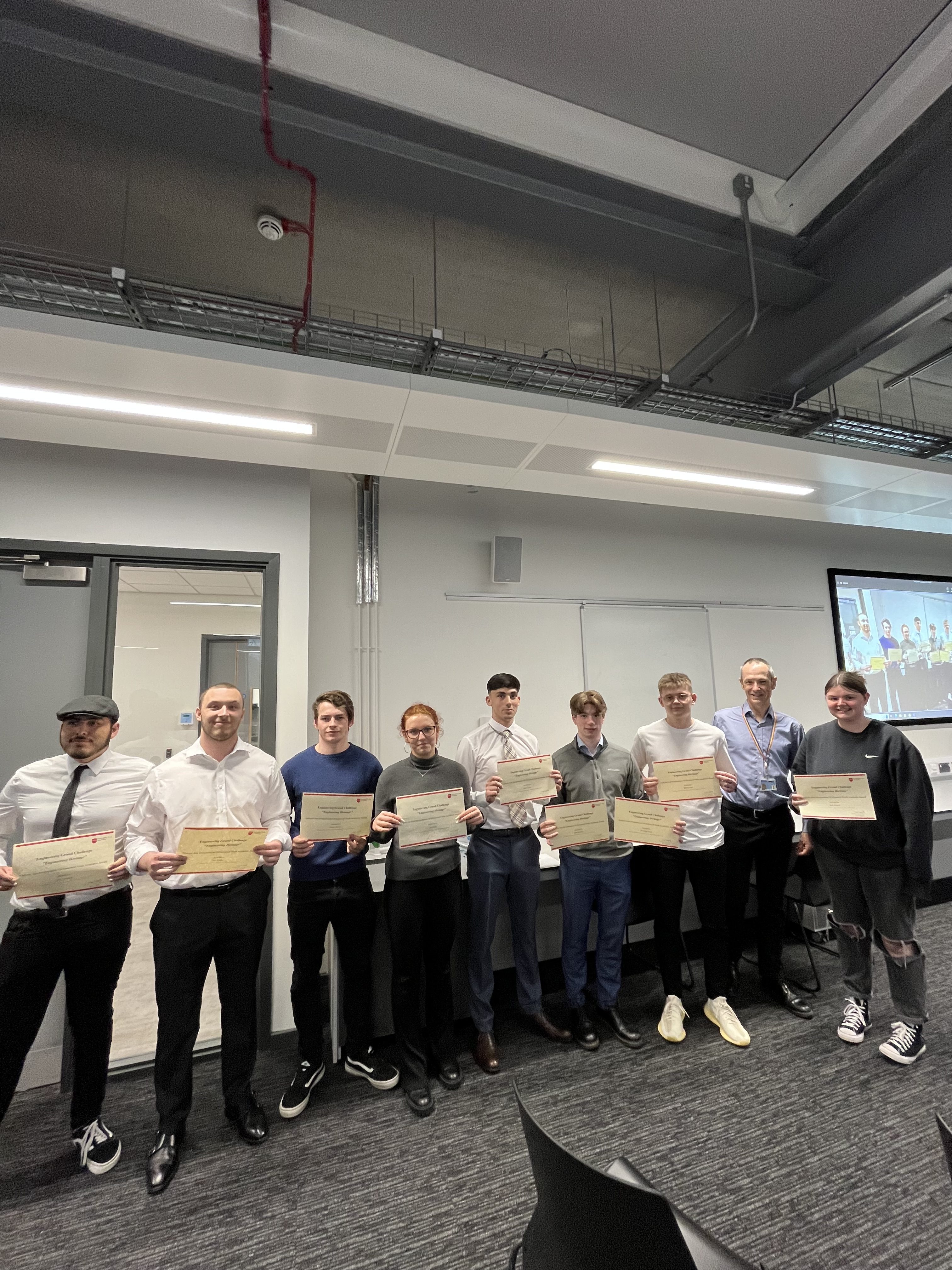
Heritage Preservation Winner: Smartefact Team
The Smartifact Team comprises first and second-year engineering students Lucy Cole Ibraheem Iqbal, Beth Russell, Enzo Timarchi, Henry Saint, Joe Bobba, Daniel Driver, Will Lawson and James Behling.* They are pictured with Professor Neil Mansfield.
The Smartefact team’s product incorporates 3D scanning, weighing scales, date estimation, material composition data and storage into one easy-to-carry device powered by a battery combined with solar power. This benefits archaeologists working in remote locations or on time-sensitive projects who cannot transport artefacts to a new location for analysis.
* Lineup may not match students’ names.
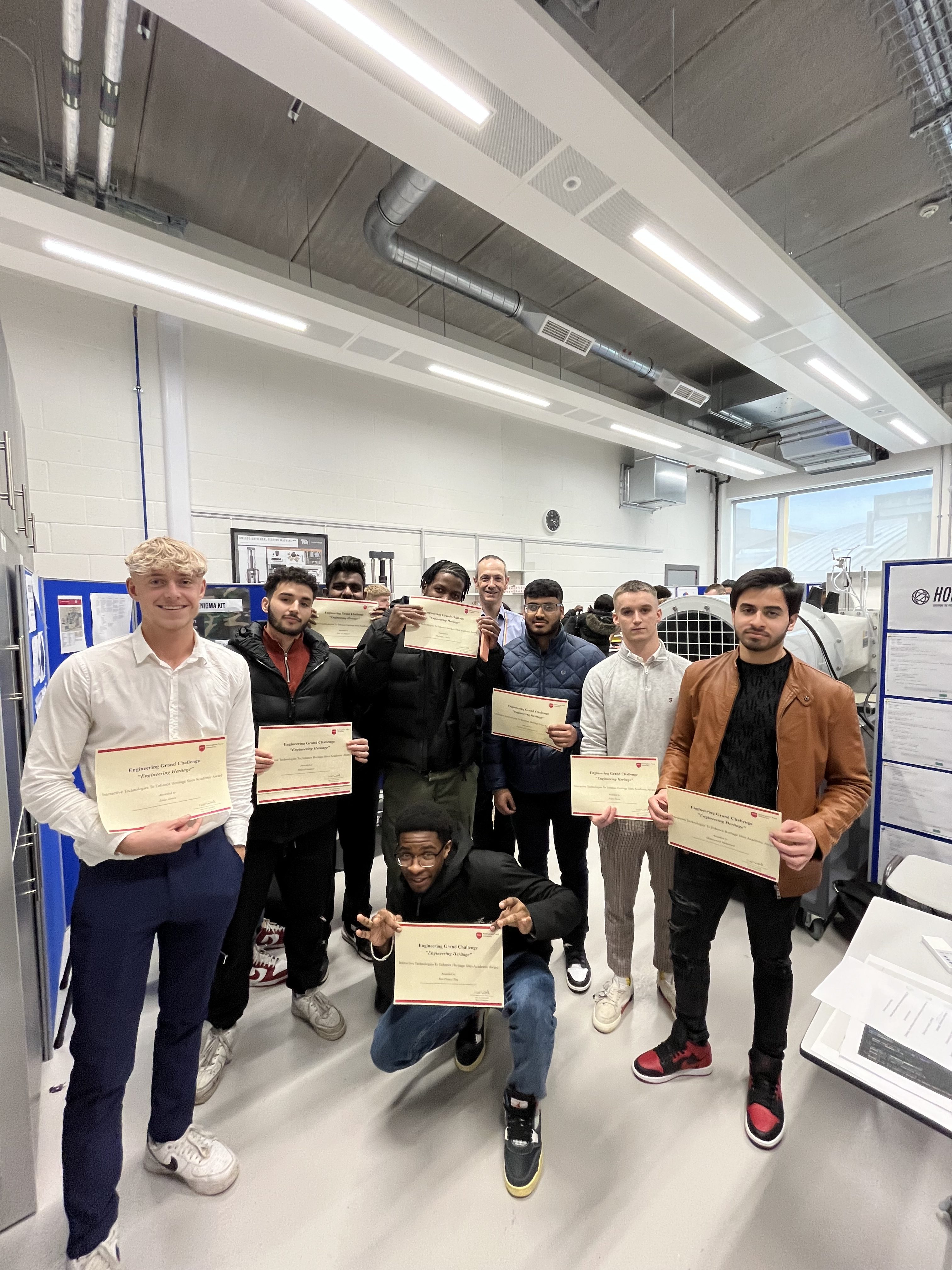
Interactive Technologies to Enhance Heritage Sites Winner: HOLO-X Team
The HOLO-X Team comprises first and second-year engineering students Luke Jones, Mouad Gadaur, Ashwin Warnakulasuriya, Zain Ul Abideen, Ras-Prince Tim, Justin Jai, Muzingaye Moyo and Jaigo Davis.* They are pictured with Professor Neil Mansfield.
HOLO-X fuses two cutting-edge technologies – AI and hologram technology – to create an interactive and educational experience which is captivating and accessible to all people of all ages and disabilities.
The demonstrator was holographic Charles Darwin and Albert Einstein avatars who could give verbal information and respond to user questions. It was particularly aimed at people with dyslexia who may find written materials at heritage sites and in museums inaccessible.
The product was aimed at museums and historical sites to enhance the visitor experience, but could also be used as an educational tool in schools.
* Lineup may not match students’ names
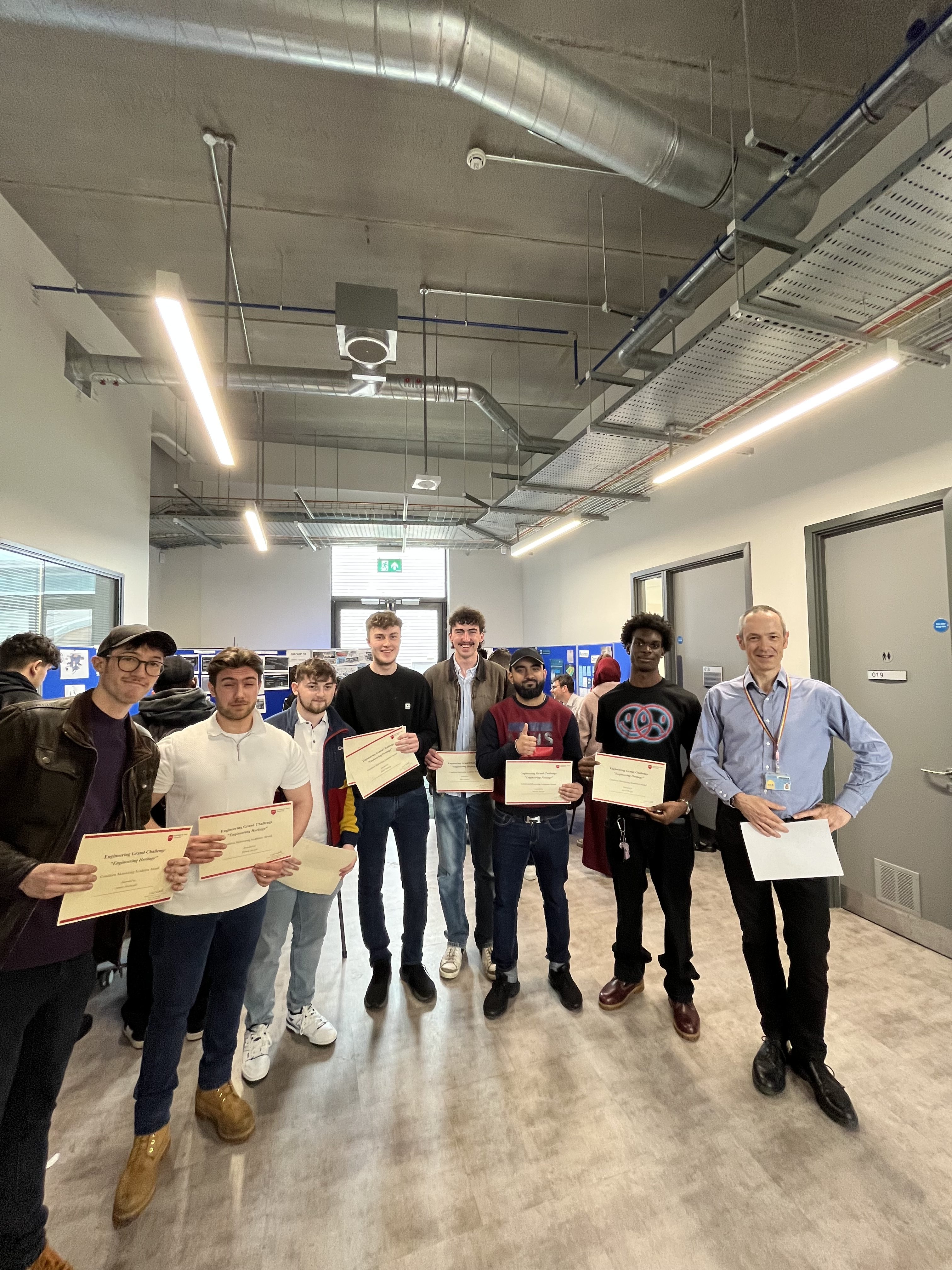
Condition Monitoring Winner: The Sixth Sensor Team
The Sixth Sensor Team comprises first and second-year engineering students Fraser Robinson, Samuel Davidson, Dylan Hacking, Youssouf Barkay Molimi, Emmanuel Parker, Dennis Stroud, James Harbottle, Hassan Haseeb and Oliver Wright.* They are pictured with Professor Neil Mansfield.
Sixth Sensor Team’s product is intended to be fitted to classic car engines. It uses a range of sensors to collect parameters such as engine coolant quality, oil pressure and oil contamination and then sends data to the user’s mobile device using Bluetooth where it is analysed in an accompanying app. It’s easy to install and aimed at both classic car owners and motor museums.
* Lineup may not match students’ names
Positive feedback
We’ve noticed a measurable increase in initial engagement and motivation since offering the prize fund. Again, we saw a huge number of students really go above-and-beyond to impress, and there was a tremendous buzz around the engineering department throughout the project. Staff and guests attending the Trade Show event remarked that they were impressed with the quality of projects and enthusiasm this year.
Dr Rebecca Margetts
Principal Lecturer | Course Leader for BEng & MEng Mechanical Engineering
School of Science and Technology, Department of Engineering
Nottingham Trent University
